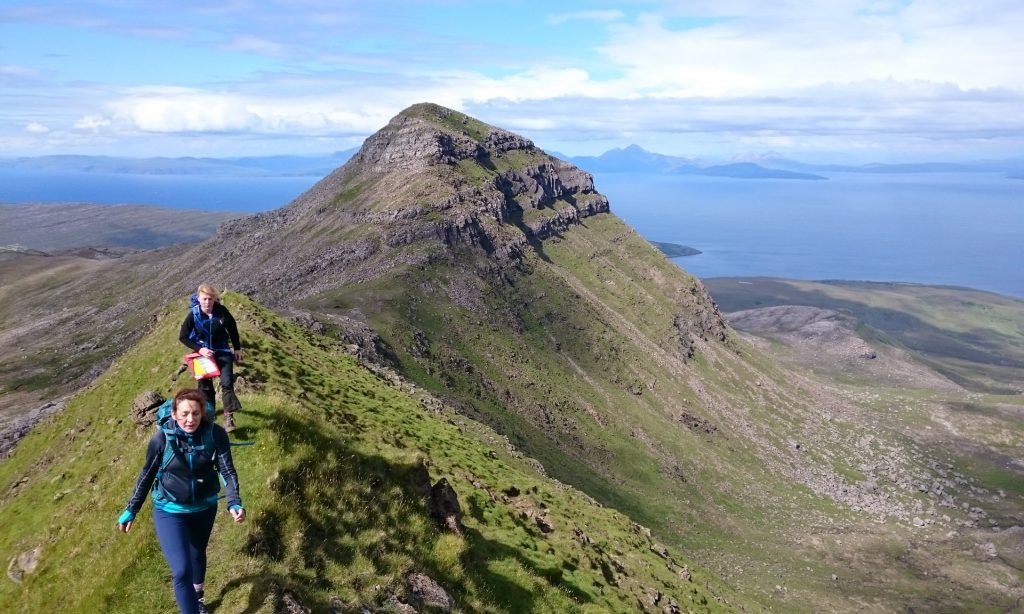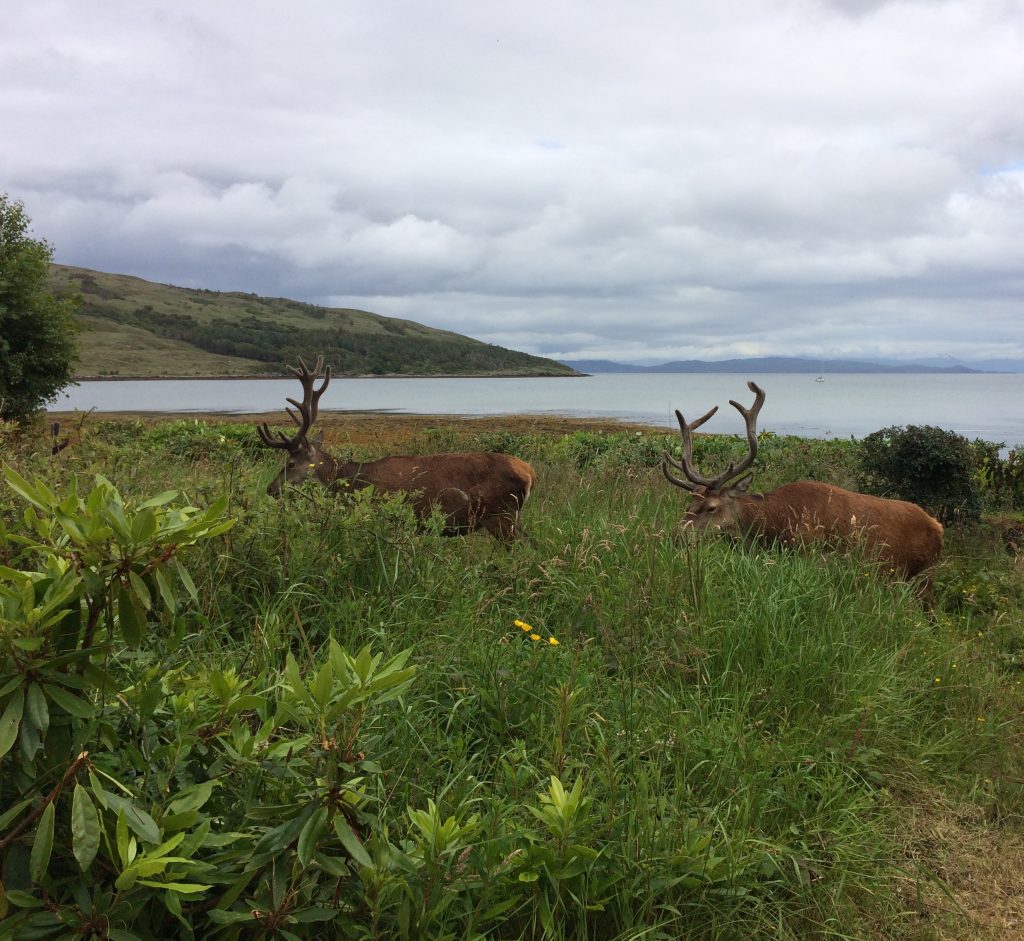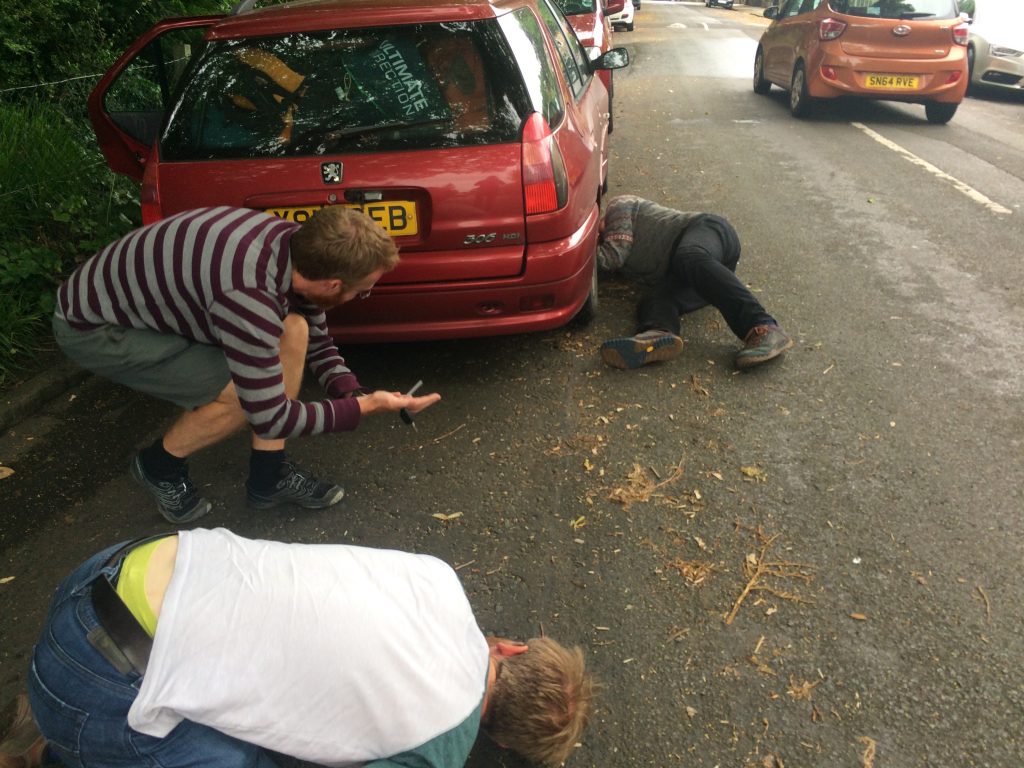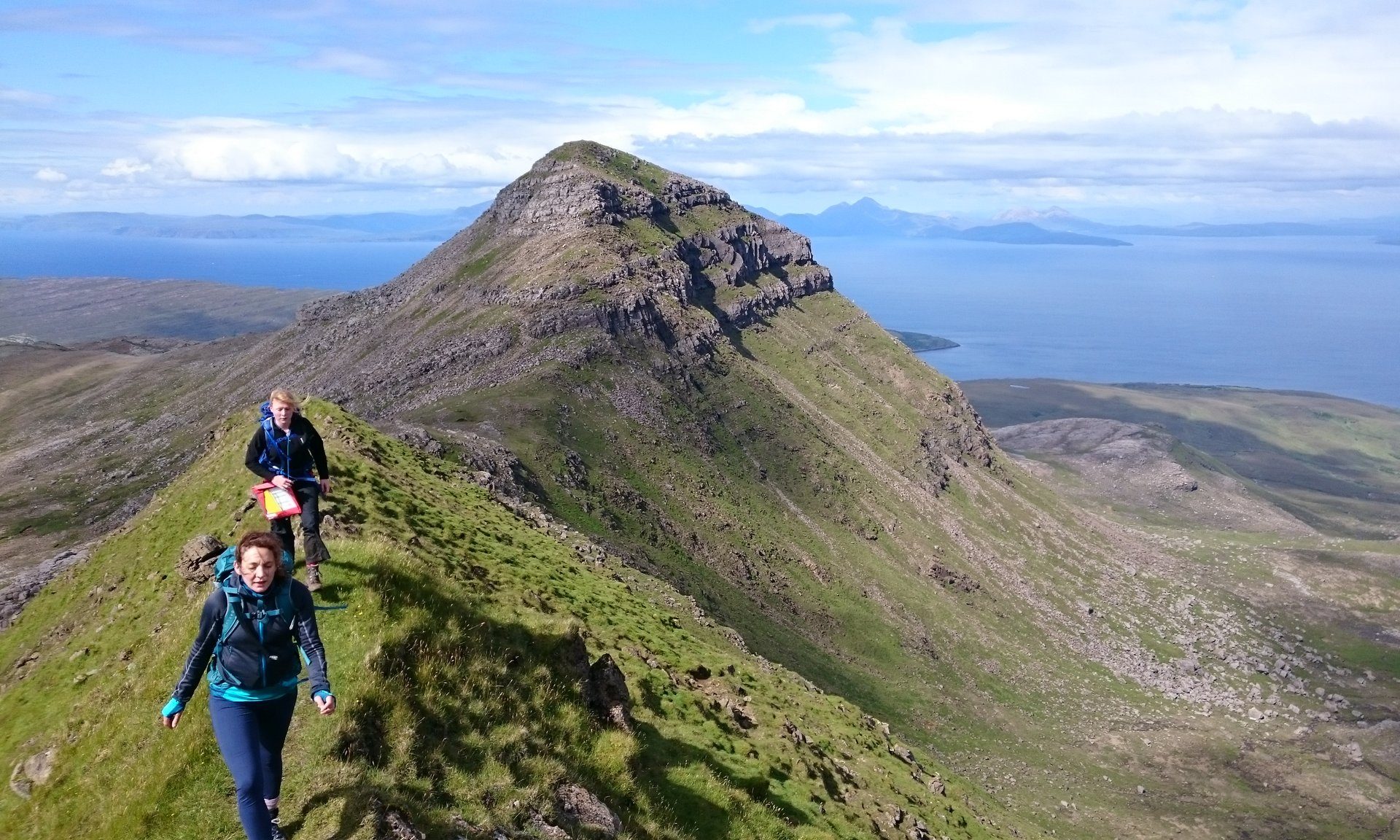In July 2017, I found myself on my first non-compulsory fieldtrip as an undergraduate, in a group of 5 with two academic staff members and two PhD students heading to the Isle of Rum in the Scottish Inner Hebrides. The trip had been planned initially for my Masters project, but with Rum such a famous geological locality, everyone had work they wanted to do there.
This kind of fieldtrip was a new experience for me – with no plan tried out by years of undergraduates as we usually have, it was exciting to see how research trips like this gradually develop based on the things you discover as you go along. Following a long drive in a car of questionable quality (is power steering supposed to cut out if you steer too dramatically?), a rainy overnight stay in Mallaig sampling some of the local beer and an emergency drill on the ferry crossing, we arrived in the new bunkhouse on Rum, the only accommodation suited to large groups on the island. The permanent adult population is about 20, and with ferry crossings often cancelled in bad weather and one general store-pub crossover it is about as remote as you can get in the UK. In contrast to the stereotypes of Scotland in July, we had amazing weather, and very few midges during the day.
The geology was as incredible and puzzling as expected. We were fortunate to have Luke Hepworth (Keele University), writing up his thesis on the island, as a field guide for the layered cumulate series which Rum is famous for. There were long climbs to the summit, but the view from Askival over the island was worth it.


We spent several days sampling peridotite plugs and trying to find picrite dykes mentioned in previous literature, giving us a chance to explore some of the less well-trodden routes around the island.



We managed to spot some of the golden eagles that nest on Rum, as well as the deer that roam freely, a legacy of the days of Kinloch Castle as a hunting lodge, and the island’s current status as a nature reserve.

It was a very enjoyable and interesting field trip, and I would love to do something similar again – with the exception, perhaps, of the incident of the brake cable coming loose on the car on the way back near Edinburgh.

Carrie Soderman Part III student


